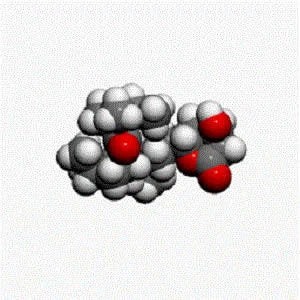A new study published in the journal CHEST suggests that the drug specific effect of statins in sepsis is not correlated to their lipid-lowering potency. The study results are compatible with in vitro experimental findings, according to researchers.
"In this population based study, chronic statin treatment prior to sepsis development was associated with a 12% reduction in 30-day mortality in comparison to no prior statin treatment," the study says. "The favourable effects of statins correlate with statin’s in vitro antibacterial activity, but not with the lipid-lowering potency."
Despite major advancements in medical care, the mortality of sepsis remains high, with a case-fatality rate around 17 to 26%. Empirical antibiotic and organ supportive care have been the cornerstones of sepsis management. However, the global escalation in antimicrobial-resistant bacteria is increasingly compromising the effectiveness of antimicrobial therapy. Thus, therapies that can attenuate the dysregulated immune response in sepsis have been intensively studied in the past decade.
Due to the pleiotropic immunomodulatory effects of statins demonstrated in animal models of sepsis, several clinical observational studies and randomised controlled trials (RCTs) have investigated whether the use of statins could improve the outcome of sepsis in humans. In contrast to observational studies, RCTs however did not observe beneficial effects of post-admission use of statins in sepsis patients. Just when the enthusiasm in the potential role of statins in improving sepsis outcome has tempered, emerging new evidence demonstrates that statins may have direct antibacterial effects and modulate the bacterial virulence. The antibacterial or antivirulence effects may be statin-specific, not directly correlating with their lipid-lowering potency.
In the current study, investigators sought to determine whether statin treatment exerts a drug or a class specific effect in sepsis. Short-term mortality in sepsis patients was analysed using data from a national health insurance research database. Use of statins was defined as the cumulative use of a specific statin (atorvastatin, simvastatin or rosuvastatin) for more than 30 days prior to the index sepsis admission. The researchers examined the association between statin and sepsis outcome by multivariate-adjusted Cox models and propensity score (PS) matched analysis, using a 1:1:1 PS matching technique.
A total of 52,737 sepsis patients fulfilled the study's inclusion criteria, of which 1,855 were prescribed atorvastatin, 916 simvastatin, and 732 rosuvastatin. Compared with nonusers, simvastatin (hazard ratio [HR] 0.72, 95% CI 0.58-0.90) or atorvastatin (HR 0.78, 95% CI 0.68-0.90) were associated with an improved 30-day survival, while rosuvastatin was not (HR 0.87, 95% CI 0.73-1.04). Using rosuvastatin as the reference, atorvastatin (HR 0.79, 95% CI 0.64-0.99) and simvastatin (HR 0.77, 95% CI 0.59-0.99) had superior effectiveness in preventing mortality.
"To conclude, our results suggest the possibility for physicians to selectively prescribe simvastatin to patients who are indicated for dyslipidaemia treatment and are also at high risk of developing sepsis. These high sepsis risk patients include those with cancer, diabetes, old age, immunocompromised conditions, and a history of sepsis. Further studies in different populations or using different study designs are warranted to validate our findings," the authors write.
Source: CHEST
Image Credit: 辛伐他汀
References:
Lee, Chien-Chang et al. (2017) A population-based cohort study on the drug specific effect of statins on sepsis outcome. CHEST. doi.org/10.1016/j.chest.2017.09.024
Latest Articles
Sepsis, statin, lipid-lowering potency, dyslipidaemia
A new study published in the journal CHEST suggests that the drug specific effect of statins in sepsis is not correlated to their lipid-lowering potency. The study results are compatible with in vitro experimental findings, according to researchers.










